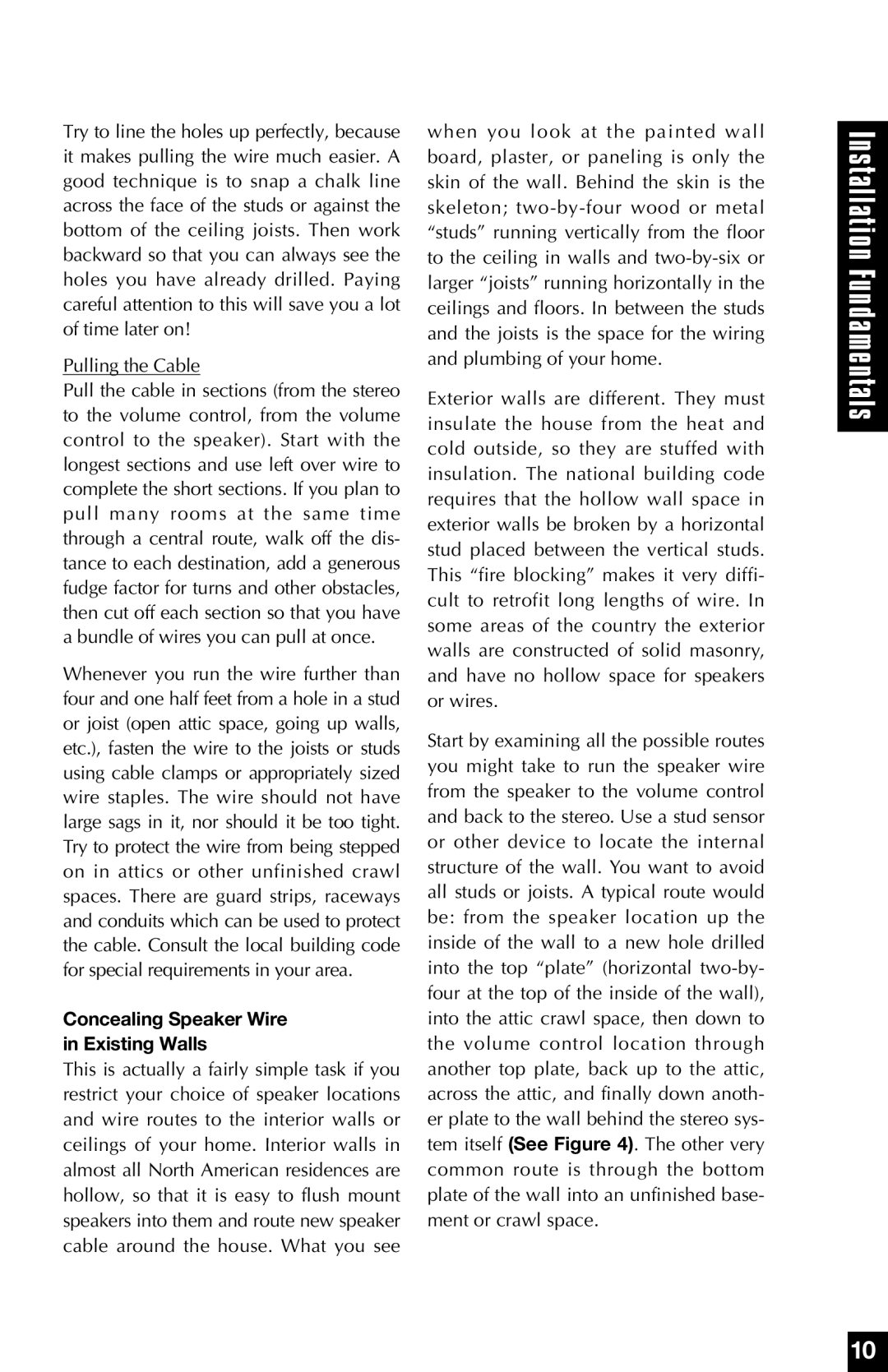AT6, AT8, AT5 specifications
Niles Audio, a renowned name in the audio industry, offers a range of exceptional in-wall and in-ceiling speakers designed to deliver high-quality sound without compromising the aesthetics of your living space. Among their outstanding offerings are the AT5, AT6, and AT8 models, each featuring unique attributes tailored to meet diverse listening preferences and installation environments.The Niles AT5 is a compact yet powerful speaker that boasts a two-way design with a 5.25-inch woofer and a 1-inch tweeter. The AT5 is engineered to provide remarkable sound clarity and a balanced frequency response, making it ideal for small to medium-sized areas. Its shallow mounting depth facilitates easy installation, even in tight spaces. The speaker's sleek profile and paintable grille allow it to blend harmoniously with any interior décor, making it an excellent choice for homeowners seeking both performance and style.
Moving up the range, the Niles AT6 features a larger 6.5-inch woofer, enhancing its bass reproduction while maintaining detailed mid-range and treble frequencies. This model is well-suited for medium-sized rooms and can serve as part of a multi-room audio system. The AT6 incorporates Niles’ innovative technology, including a unique shallow enclosure design and a pivoting tweeter, allowing for directional sound customization. This feature is instrumental in optimizing the listening experience by directing audio toward the listening area.
At the top of the series, the Niles AT8 showcases an impressive 8-inch woofer that offers deep, rich bass response and powerful sound output. This model excels in larger spaces and is perfect for immersive home theater experiences. The AT8 also features advanced acoustic engineering, including optimized crossover networks and high-quality components to ensure minimal distortion and exceptional sound fidelity. Its robust construction and adjustable mounting system provide flexibility during installation.
All three models are part of Niles Audio's commitment to delivering premium sound experiences with aesthetic considerations. They are designed to integrate seamlessly into any home while offering superior performance. The speakers are also backed by Niles’ reputation for durability and reliability, ensuring they will provide outstanding audio performance for years to come. Whether you choose the AT5, AT6, or AT8, Niles Audio offers options that cater to various audio needs, ensuring an exceptional listening experience for every room in the house.
